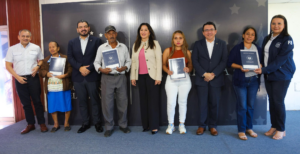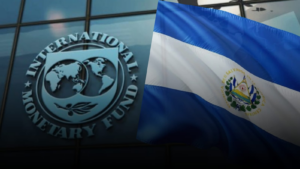With the aim of discussing a critical topic of profound social relevance – due to its direct impact on society’s daily decisions – nearly 100 journalists from Latin America participated in the webinar ‘Dismantling disinformation: The power of fact-checking and the role of the journalist in times of AI’, within the InterSection of Value series. Organized by integrated communications agency Latam Intersect , the objective was to land clear ideas on how to confront disinformation in an environment where falsehoods move quickly.

“We wanted to create a space where journalism and technology meet from critical thinking and collaboration. Fact-checking is more necessary than ever, but also more complex. Today it is not only about fact-checking, but also about understanding how AI can be both an ally and a threat”, explained Claudia Daré, co-founder and director of Latam Intersect.
Prior to the webinar, the agency conducted research to measure the use of fact-checking and the readiness of journalists in the region to deal with this problem. After interviewing more than 200 journalists in 10 Latin American countries, it was found that most of them were interested in going deeper into the subject and that 54.2% stated that they do not have specific protocols or tools for fact-checking in their media and 11.9% stated that they are in the process of implementing them. This strengthened the idea of creating this space,
According to the Digital News Report 2025, conducted by the Reuters Institute for the Study of Journalism in 49 global markets, there is widespread concern about disinformation and misinformation in various channels and more than half of the global public is concerned about the distinction between the real and the fake in online news.
Similarly, reliance on social media and video for news is highest among younger generations, with 44% of 18-24 year olds and 38% of 25-34 year olds considering it their primary source, just as online video has become popular as a news referrer, rising from 52% in 2020 to 65% in 2025.
With leading voices such as Daniel Moreno (founder of Sabueso, former director of Verificado and Animal Político, Mexico), Ignacio Ferreiro (Data Coordinator at Chequeado, Argentina), Guillermo Salas Dalsaso (consultant in digital transformation and AI, Costa Rica), the meeting was not just another diagnosis of the problem: it was an urgent conversation on how journalism can use technology to gain ground against the systematic manipulation of public opinion.
“Considering all this information, as a communications agency, Latam Intersect assumes its share of responsibility in the face of the disinformation crisis, not only by working with the media, but also by promoting spaces for exchange and training such as this one. The ‘InterSection of Value’ series was born precisely from this need: to actively contribute to the information ecosystem, beyond commercial interests”, said Daré.
The 5 keys left by the experts:
1. Disinformation is already a business model, it is not just about errors or rumors. There is a well-oiled machinery that produces and disseminates false or manipulated content for political, economic, or ideological purposes. From black campaigns to influencers hired to viralize narratives, the phenomenon is monetized. Regulation can no longer be optional.
2. Mitigating disinformation requires understanding it from a fact-checking perspective and this implies differentiating between false content (facts that did not happen, such as deepfakes) and true content used out of context (real information used misleadingly, such as war conflicts presented as current). For the former, it is key to contact sources and contrast different visions, and for the latter, it is vital to use tools such as reverse image and video searches.
3. AI can scale the verification or escalate the problem, as it is a double-edged tool. It can help transform a verified article into multiple formats (text, video, audio), accelerating its dissemination. But it can also amplify errors if given the wrong target. Disinformation generators are already using it with surgical precision. Journalists need urgent training on this front.
4. Beware of the AI becoming an accidental source of disinformation. If given an incorrect target or hiding a false claim within a prompt, the AI (such as Chat GPT) will attempt to achieve the target by adopting the claim without question, generating a coherent but false reality. This is dangerous because disinformation generators often do understand how to manipulate AI. To that extent it is key to educate against the use of technology in content generation.
5. The value of journalism in the digital era lies in building reputation and credibility. Journalists and communicators must be critical and analytical thinkers and organizers, generating deep thinking and connecting with users.
The panelists were also able to recommend key tools for daily use in newsrooms and for content developers, and for all those interested in checking the information they receive daily:
- Originality.ai: It allows to check if a text was generated by AI and if there is plagiarism, in addition to analyzing statements and searching for sources. It is low cost and easy to access.
- Perplexity AI: Configured for news and information processing, it can refute false claims directly.
- Hive Moderation: Useful for detecting AI-generated content in audio and video.
- Reverse Search: Identifies content used out of context.
- Google Fact-Checking Tools: Its interface has several options to identify erroneous or out-of-context information, among other possibilities.







